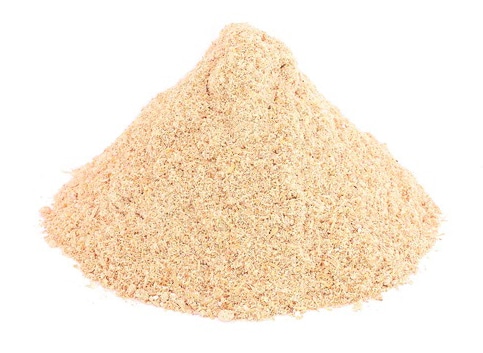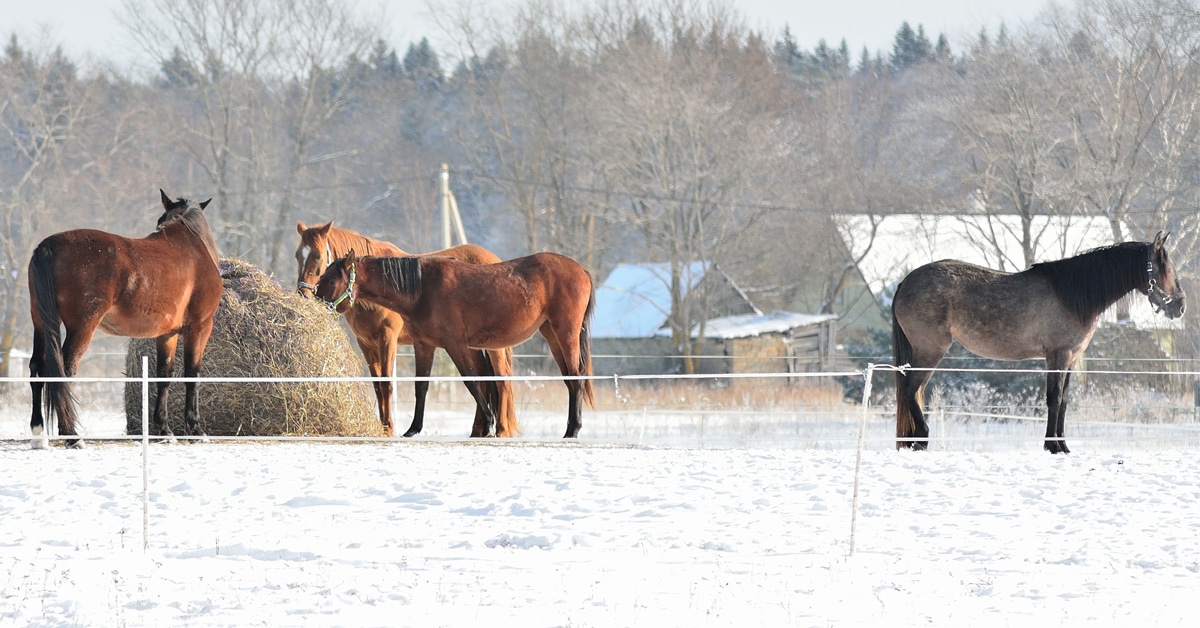In Canada, managing horses in the winter months can take careful consideration, especially for those who struggle to maintain weight. Horses are broadly divided into three categories: easy, average, or hard keepers – classifications determined by how they maintain weight. Easy keepers are horses that readily maintain condition and can often be over-conditioned, whereas hard keepers are horses that typically require additional feed and supplemental calories above and beyond hay to maintain a healthy body condition.
Thermoregulation
Horses are well equipped to handle cold temperatures as long as they are provided with shelter and free choice access to forage. However, for horses that struggle to maintain weight, the cold temperatures can exacerbate the issue as horses expend additional energy to maintain their body heat. For horses that struggle to maintain weight, a nutrition plan should be implemented in the fall months to get a jump on unwanted weight loss.
For almost all horses, hay is an optimal feed to support them in maintaining their core body temperature. Hay is primarily fibre and is fermented in the hindgut of the animal. This process produces heat and is crucial to the horse being able to stay warm. For senior horses, additional thought is required as the ability to thermoregulate decreases with age. Also, their capacity to process hay can be compromised as the hindgut loses some of its ability to ferment fibre, resulting in a loss of nutrients. These horses must be monitored closely and preferably fed alfalfa hay or high-quality grass hay rather than stemmy, mature hays made of tougher fibre.
For hard keepers entering winter, the first step should be ensuring that their base diet is balanced and that they have free-choice access to a quality hay source. Testing your hay to ensure that you are aware of the nutritional content will provide valuable information to make informed nutrition decisions. Once you have tested the hay and are providing the horse with a source of vitamins and minerals such as a ration balancer, you can then begin to explore the various options for increasing the energy content of the diet to support your hard keeper throughout the winter months.
What to Add?
Many hard keepers can benefit from the addition of preserved forages to the ration. These include products such as hay cubes and hay pellets. Beet pulp is another readily-digestible fibre source that can be added for additional energy. Fibre is almost always the go-to for horses as it is what their gastrointestinal tract is designed for. Different forage types will have varying energy contents, therefore it is beneficial to compare the guaranteed analysis on the label – for example, alfalfa will typically provide more energy to the horse than timothy.

Rice bran.
If you have maxed out the fibre intake for the horse, adding fat is another great option. Despite horses not having a gall bladder, they digest fat quite well as long as it is introduced to their ration slowly. Fat is calorically dense, so when you are trying to increase the energy in the diet, this is a great tool. Rice bran is a widely available feed product that contains both fibre and fat as well as the essential fatty acids alpha-linolenic acid (omega-3) and linoleic acid (omega-6). It also tends to be quite palatable.
If you are looking for more of a top dressing to add, many horse owners will turn to oils. Adding an oil such as flax provides more energy and can be a great omega-3 source.
When making feed changes, ensure that they are made slowly over a course of 7-14 days, as horses have an extremely sensitive gastrointestinal tract.
Management Considerations
Although nutrition is of course crucial, management and housing play a significant role as well. Being able to accurately evaluate your horse’s body condition so that changes can be implemented before significant weight loss occurs is extremely beneficial. Learning how to body condition score with hands-on palpation, and performing this regularly, can reduce the issue of weight loss taking longer to be detected as it can be masked under the thick winter hair coat.
Another management consideration should be access to hay. How many horses are required to eat from one hay feeder? Are there multiple hay locations available in case horses are being bullied away from the feeder? Simply adding to your hay availability with an alternate feeding station can make a significant difference with some of these hard keepers.
Additionally, horses need adequate access to shelter as well as clean water. If you have a horse that is unable to maintain weight with shelter, free choice access to hay and additional energy sources being provided, blanketing to reduce the energy spent on staying warm can be beneficial.
To conclude, prior planning in the fall months for your hard keeper is the first step to reducing weight loss. The fall is the time to test your hay, ensure the ration is balanced and have go-to additional energy sources that can be easily incorporated.
If you have concerns about your horse’s nutrition or need assistance with hay testing, consulting a qualified equine nutritionist is recommended.

